Abstract
The pathogenicity of infection produced following intracerebral (i.c.) inoculation of wild-type vesicular stomatitis virus (VSV) or temperature-sensitive (ts) mutants of VSV was compared. ts mutants used were ts 31 (VSV complementation group II) and ts 41 (VSV complementation group IV). The i.c. injection of wild-type VSV in weanling Swiss mice produced a rapidly fatal encephalitis with death of mice in 2 to 3 days. Histopathologically, such mice exhibited minimal changes of encephalitis on light microscopy. In contrast to the highly virulent, rapidly fatal central nervous system (CNS) infection seen after i.c. inoculation of wild-type VSV, infection with ts 31 VSV produced a more slowly progressive CNS infection characterized by hind limb paralysis and death 6 to 9 days after infection. Histopathologically, CNS infection with ts 31 is associated with previously unreported extensive spongiform changes in the gray matter of the spinal cord. The inoculation of ts 41 i.c., on the other hand, did not result in either clinical illness or histopathological changes in the spinal cords or brains of infected mice. The absence of clinical and histopathological lesions following i.c. infection of ts 41 VSV suggests that the capacity to alter the pathogenesis of VSV CNS infection may be a function of only certain ts mutants of VSV.
Full text
PDF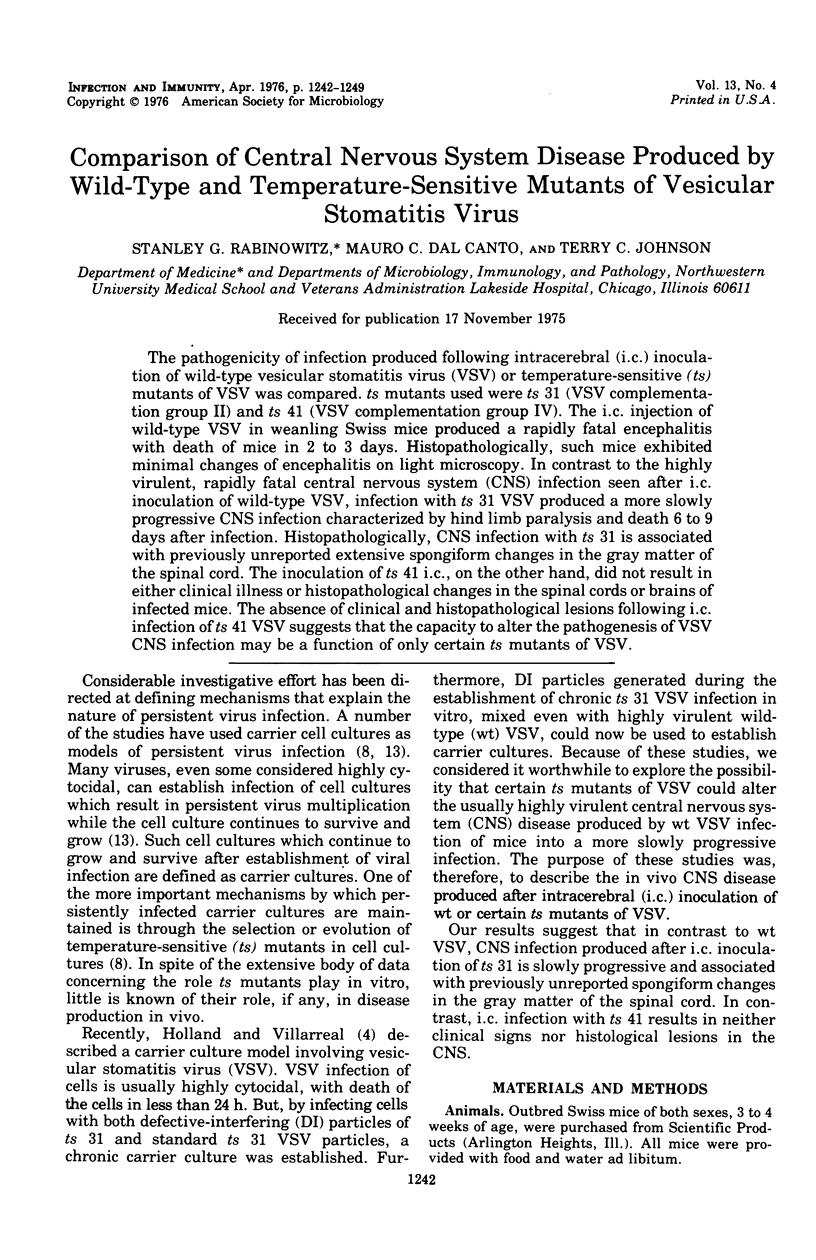
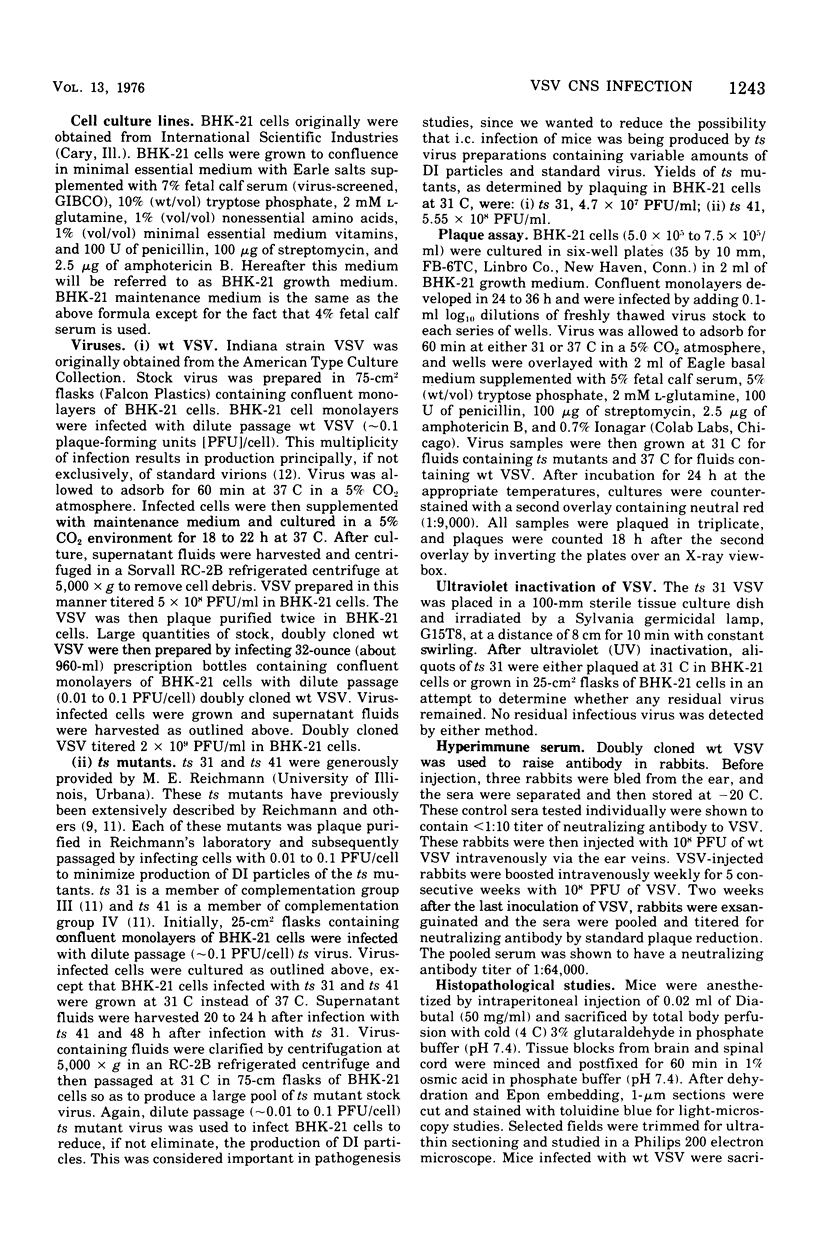
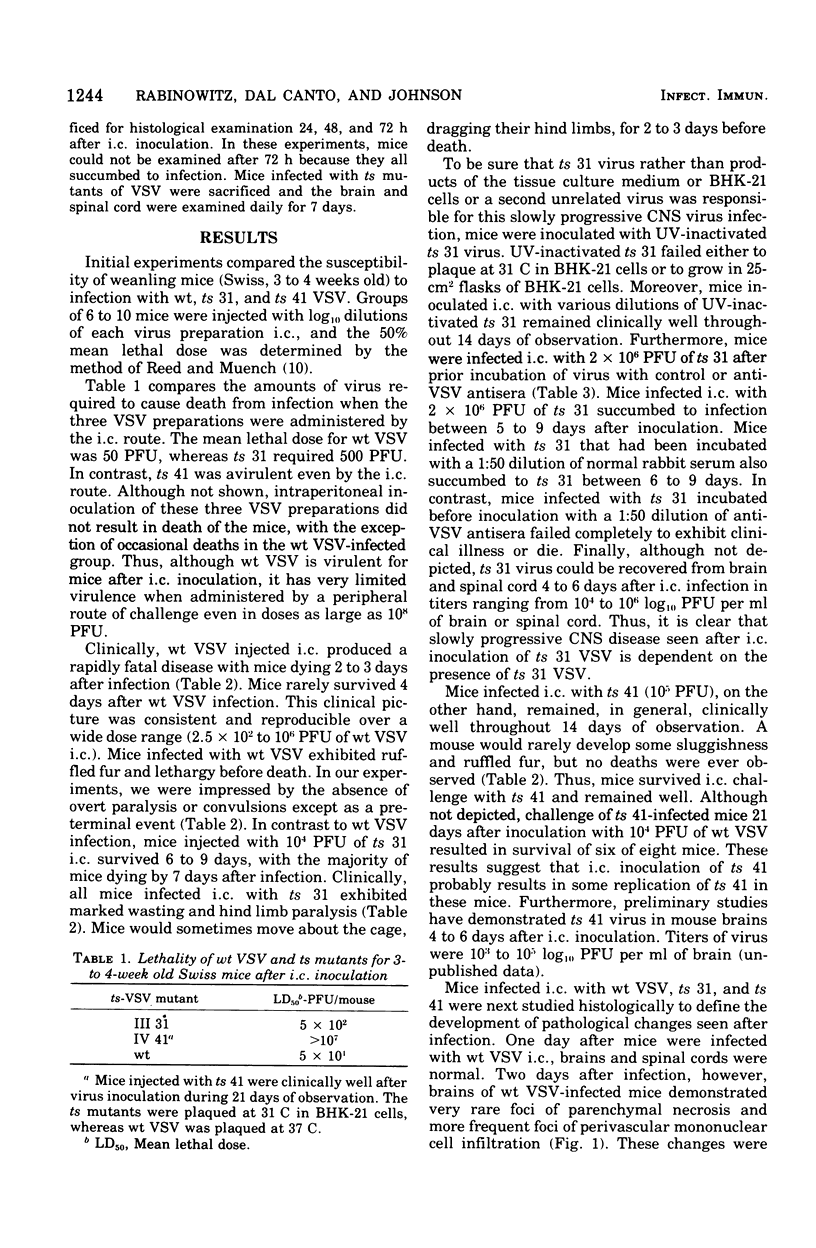
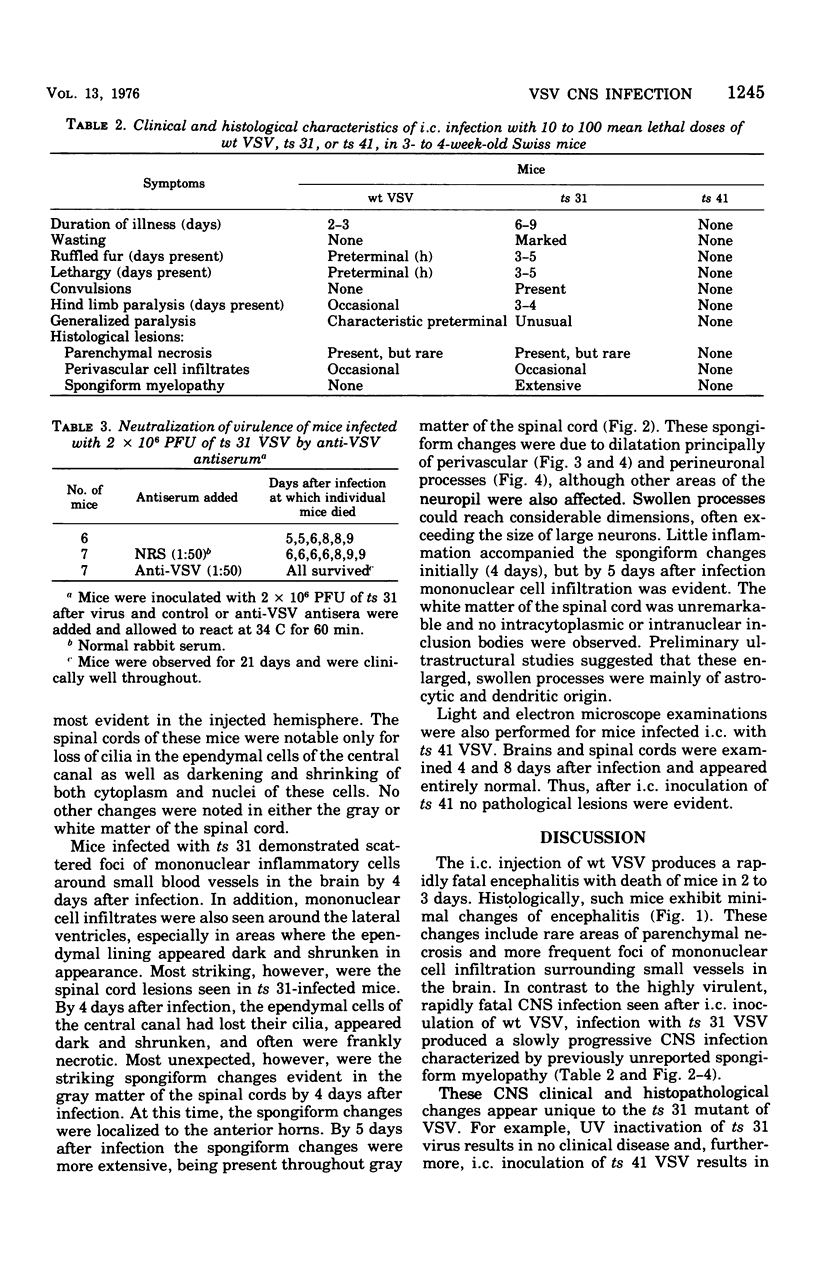
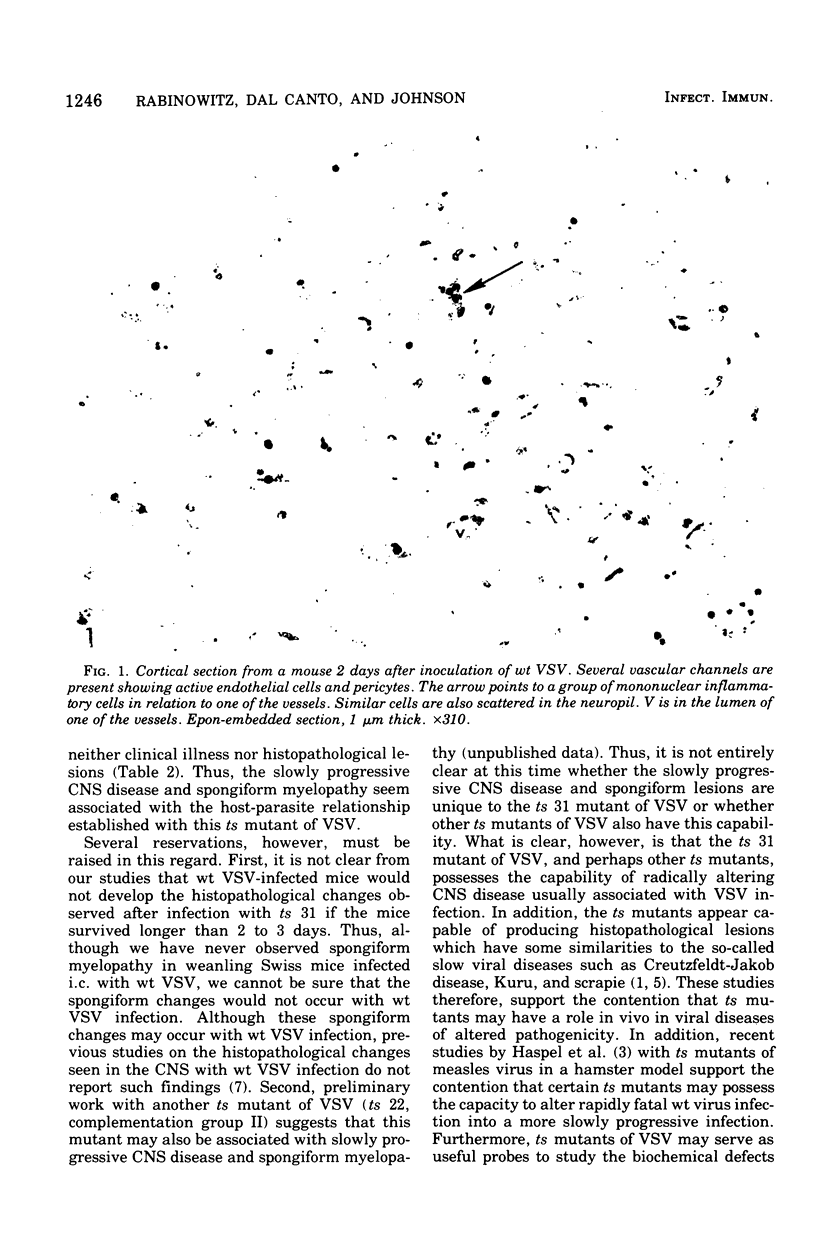
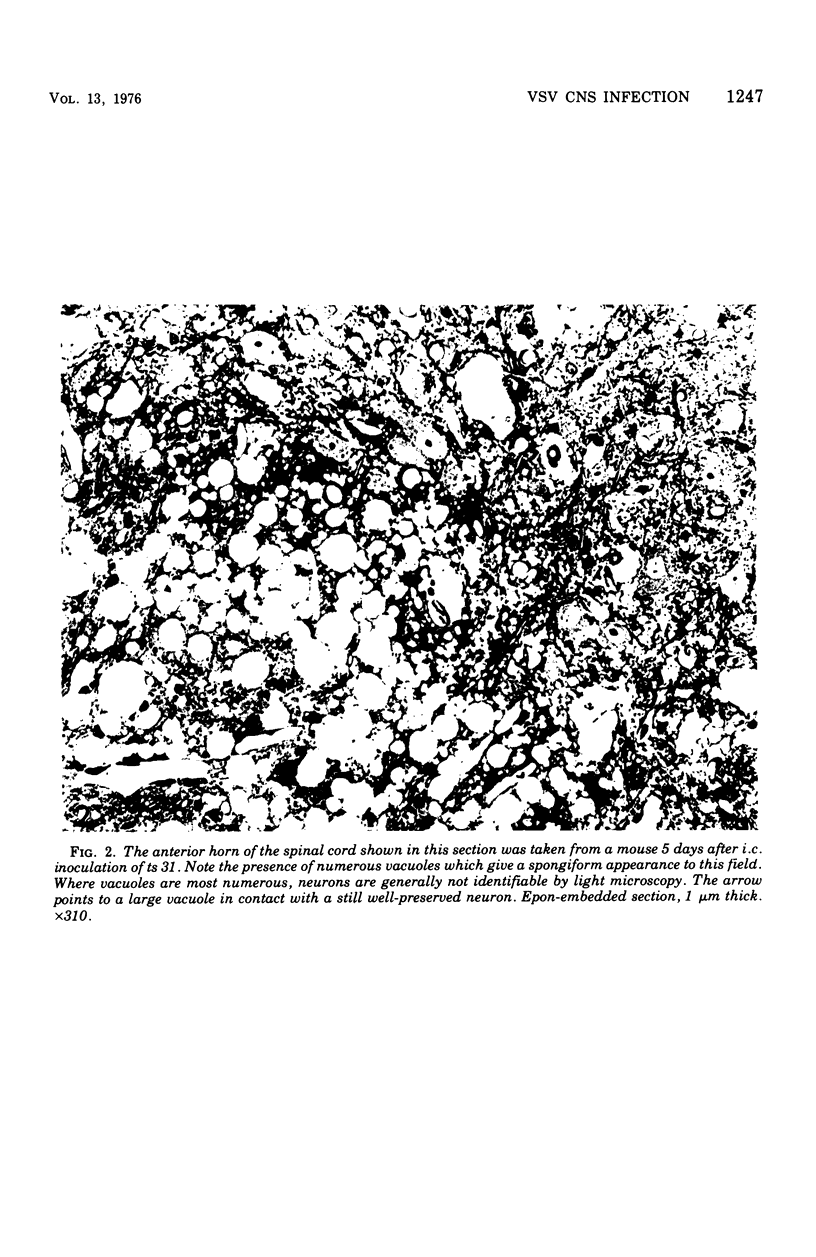
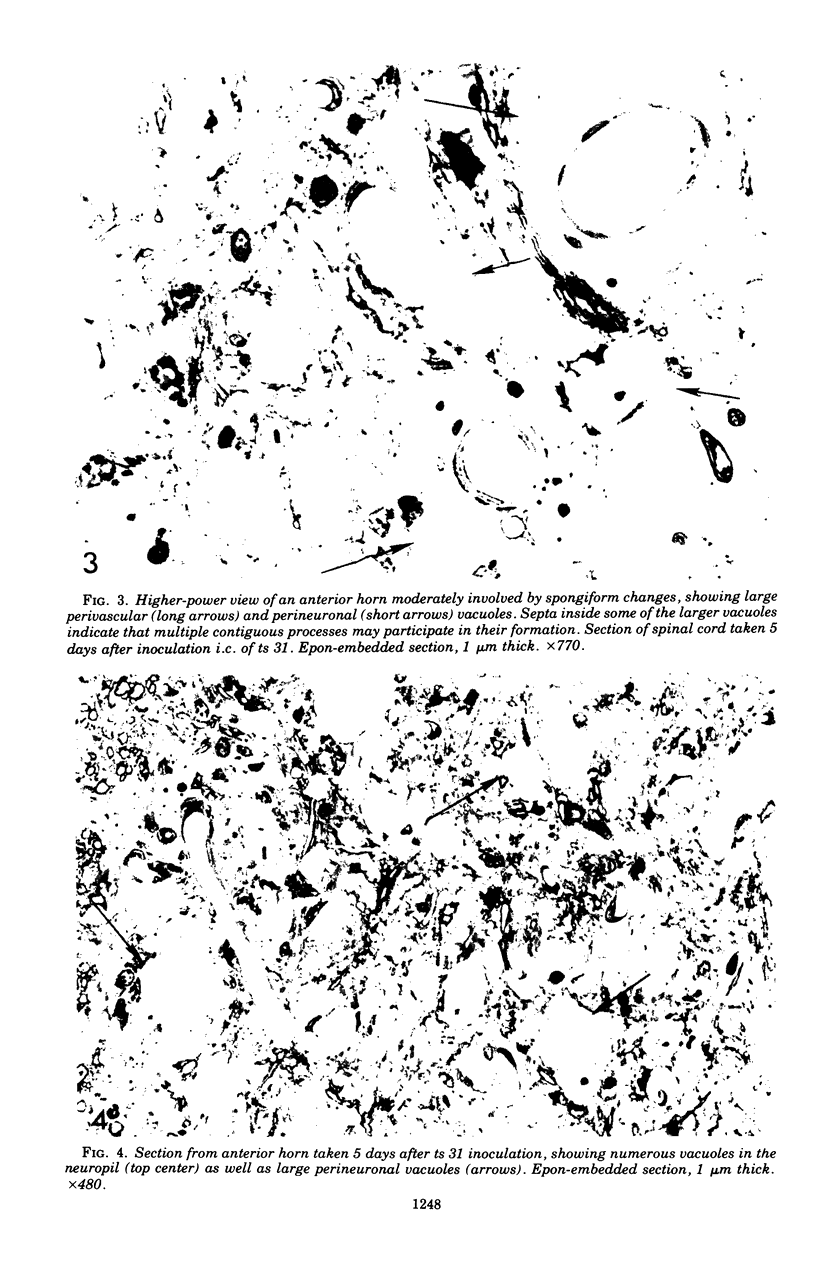
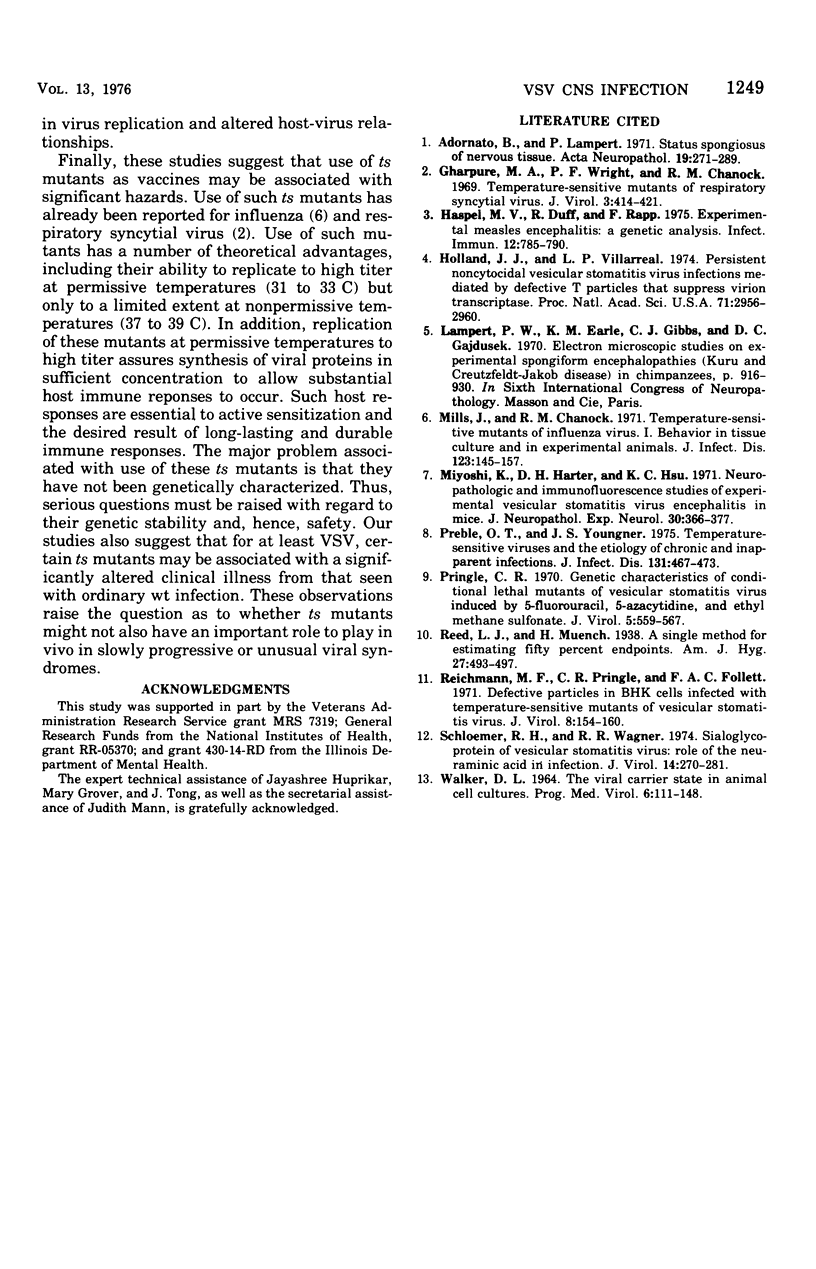
Images in this article
Selected References
These references are in PubMed. This may not be the complete list of references from this article.
- Adornato B., Lampert P. Status spongiosus of nervous tissue. Electron microscopic studies. Acta Neuropathol. 1971;19(4):271–289. doi: 10.1007/BF00692148. [DOI] [PubMed] [Google Scholar]
- Gharpure M. A., Wright P. F., Chanock R. M. Temperature-sensitive mutants of respiratory syncytial virus. J Virol. 1969 Apr;3(4):414–421. doi: 10.1128/jvi.3.4.414-421.1969. [DOI] [PMC free article] [PubMed] [Google Scholar]
- Haspel M. V., Duff R., Rapp F. Experimental measles encephalitis: a genetic analysis. Infect Immun. 1975 Oct;12(4):785–790. doi: 10.1128/iai.12.4.785-790.1975. [DOI] [PMC free article] [PubMed] [Google Scholar]
- Holland J. J., Villarreal L. P. Persistent noncytocidal vesicular stomatitis virus infections mediated by defective T particles that suppress virion transcriptase. Proc Natl Acad Sci U S A. 1974 Aug;71(8):2956–2960. doi: 10.1073/pnas.71.8.2956. [DOI] [PMC free article] [PubMed] [Google Scholar]
- Mills J., Chanock V., Chanock R. M. Temperature-sensitive mutants of influenza virus. I. Behavior in tissue culture and in experimental animals. J Infect Dis. 1971 Feb;123(2):145–157. doi: 10.1093/infdis/123.2.145. [DOI] [PubMed] [Google Scholar]
- Preble O. T., Youngner J. S. Temperature-sensitive viruses and the etiology of chronic and inapparent infections. J Infect Dis. 1975 Apr;131(4):467–473. doi: 10.1093/infdis/131.4.467. [DOI] [PubMed] [Google Scholar]
- Pringle C. R. Genetic characteristics of conditional lethal mutants of vesicular stomatitis virus induced by 5-fluorouracil, 5-azacytidine, and ethyl methane sulfonate. J Virol. 1970 May;5(5):559–567. doi: 10.1128/jvi.5.5.559-567.1970. [DOI] [PMC free article] [PubMed] [Google Scholar]
- Reichmann M. E., Pringle C. R., Follett E. A. Defective particles in BHK cells infected with temperature-sensitive mutants of vesicular stomatitis virus. J Virol. 1971 Aug;8(2):154–160. doi: 10.1128/jvi.8.2.154-160.1971. [DOI] [PMC free article] [PubMed] [Google Scholar]
- Schloemer R. H., Wagner R. R. Sialoglycoprotein of vesicular stomatitis virus: role of the neuraminic acid in infection. J Virol. 1974 Aug;14(2):270–281. doi: 10.1128/jvi.14.2.270-281.1974. [DOI] [PMC free article] [PubMed] [Google Scholar]
- WALKER D. L. THE VIRAL CARRIER STATE IN ANIMAL CELL CULTURES. Prog Med Virol. 1964;6:111–148. [PubMed] [Google Scholar]






